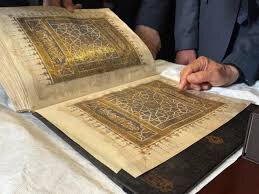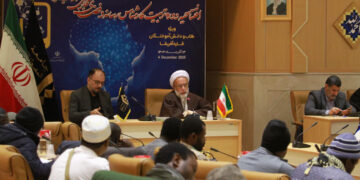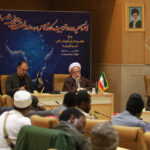The Quran had been delivered to Türkiye from Montenegro’s Islamic Union for restoration and digital preservation. It was originally gifted to the Hussein Pasha Mosque in Pljevlja (Tashlica), Montenegro, built in the latter half of the 16th century.
Behlul Kanaqi, vice president of the Islamic Union of Montenegro said that the manuscript was a source of pride for the local Muslim community in Pljevlja: “This (copy of the) Quran is a symbol of resilience—surviving centuries of political turmoil, wars, and economic hardships. We are grateful to have it restored and preserved”.
“Thanks to the expert work at Rami Library’s medical restoration unit, the Quran’s binding, stitching, and preservation were carried out to the highest standards. The manuscript has also been digitised. We are hopeful that its facsimile edition will be published soon”, he said.
Kanaqi expressed his appreciation to the Speaker of the Turkish Parliament’s Foreign Affairs Committee Fuat Oktay and TUYEK President Coskun Yilmaz.
Yilmaz revealed that the manuscript was initially believed to be more recent. However, close examination of the paper, binding, and calligraphy led experts to date it to the 14th century.
Hafiz Osman Sahin, head of the Quran Review and Recitation Committee of Türkiye’s Presidency of Religious Affairs, praised the quality of the manuscript: “It is a magnificent piece both in terms of its calligraphy and ornamentation, perfectly capturing the essence of the period in which it was created”.
Sahin extended his thanks to TUYEK and the Montenegrin Islamic community for preserving such a culturally valuable item. “We hope the facsimile edition will be published and shared widely. It’s important that people know such an original manuscript exists in Montenegro”.
Source: Turkiye Today













